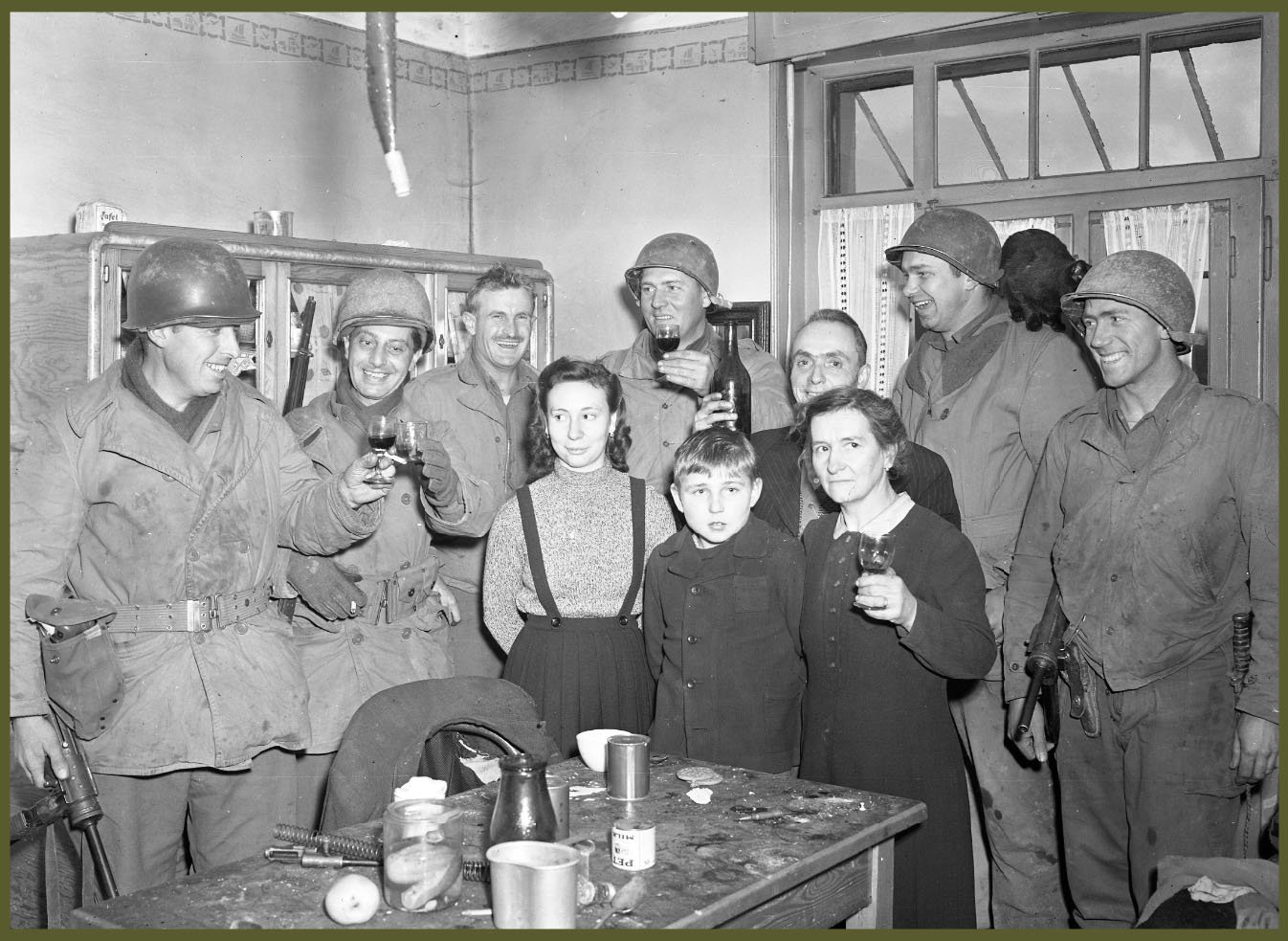
More than one month and a half after D-Day, the American troops succeeded to create and to maintain a bridgehead in Normandy, which was the first step of their undertaking.
To open the road of liberty across France, the battle of Normandy had to be won! To do so there was only one solution: “Breakthrough Normandy”.
Operation Cobra was triggered on the 25th of July 1944 by the American Headquarters at 09:40 hours for the 9th Infantry Division with a large-scale air bombardment, on the German positions along the road Périers – Saint Lô.
The attack was initially scheduled on the 24th but was called off due to bad weather conditions.
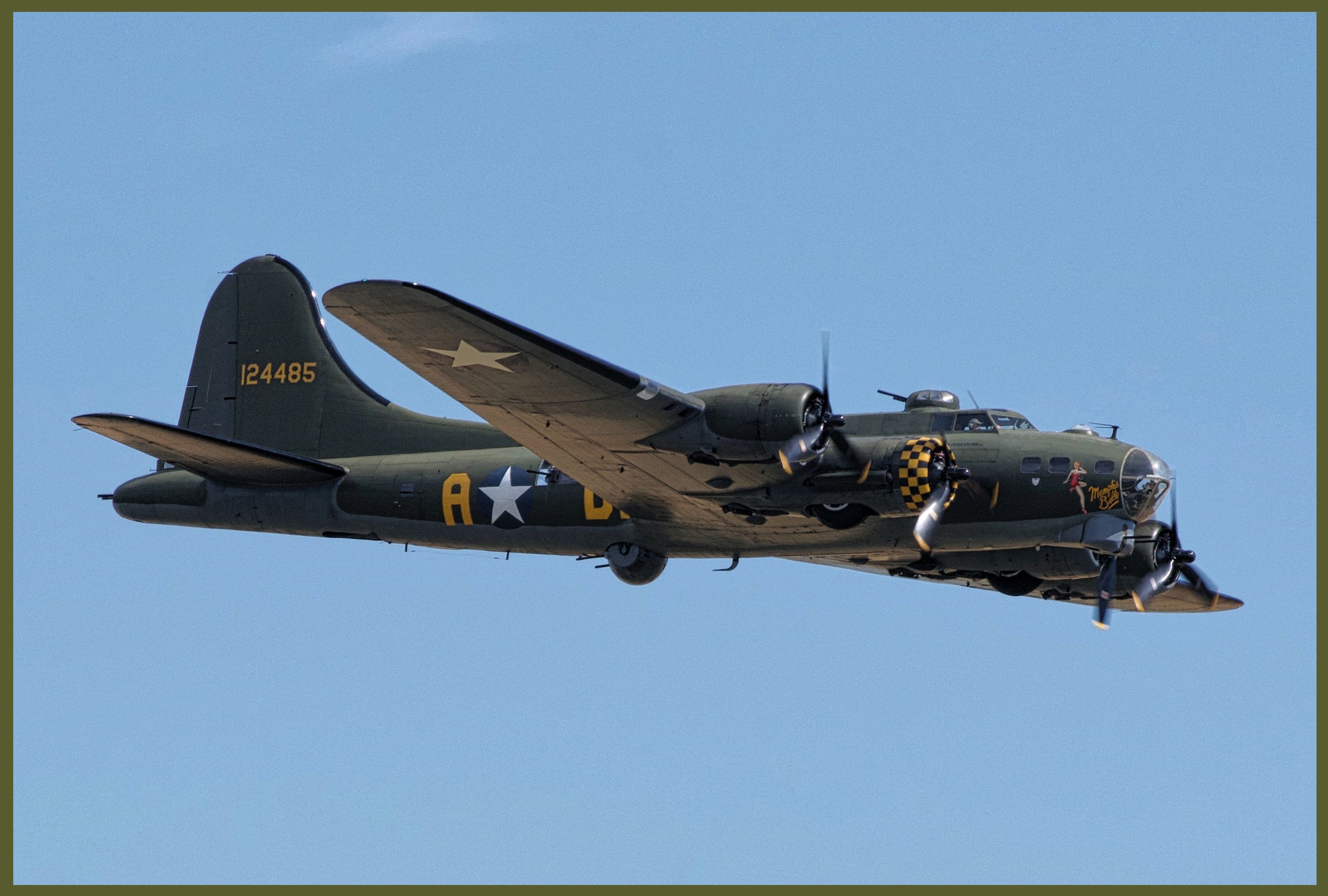
Mission 494
1,581 bombers and 500 fighters were dispatched to support the US First Army assault code name Operation COBRA with saturation bombing in the VII Corps area in the Marigny-Saint-Gilles region, just West of Saint-Lo.
843 of 917 B-17s and 647 of 664 B-24s hit the Périers / Saint-Lo area and 13 B-17s hit targets of opportunity.
- 5 Bombers and 2 fighters are lost
- 1 B-17 and four B-24s are lost
- Two B-24s are damaged beyond repair
- Forty One B-17s and one hundred thirty-two B-24s are damaged
- Nine airmen are WIA and forty six MIA
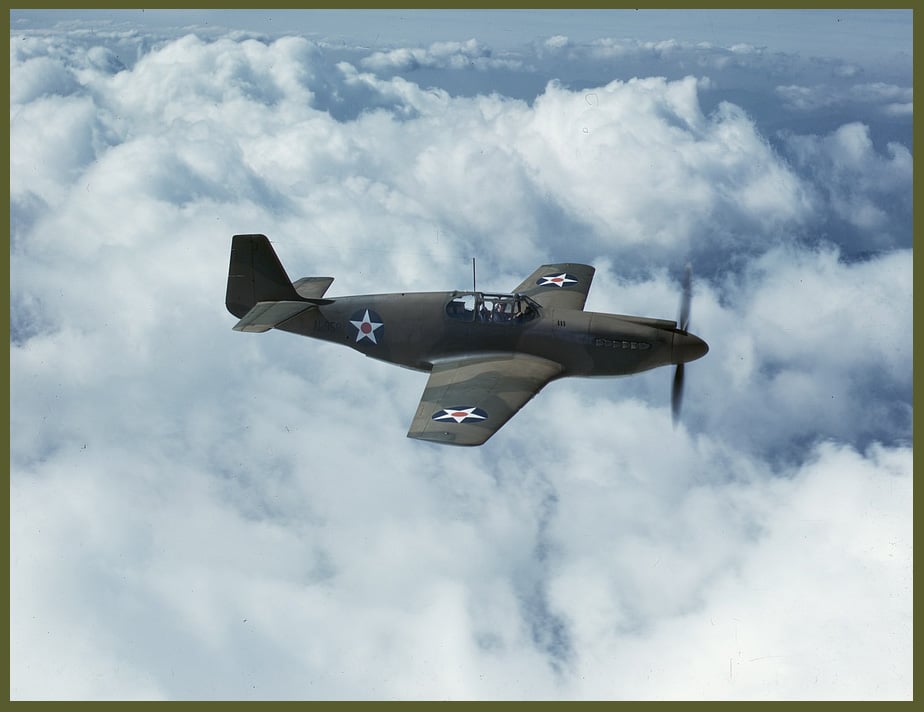
Escort was provided by four hundred and eighty three P-38s, P-47s and P51.
They also provided escort for the Ninth Air Force B-26s. They claimed 12-1-3 Luftwaffe aircraft in the air and 2-0-0 on the ground. Two P-51s were lost (pilots are MIA) and five were damaged.
Due to a personnel error, bombs from 35 bombers fell within US lines; 102 US troops, including Lieutenant General Lesley J McNair, were killed and 380 wounded.
Lieutenant General McNair was conducting observation along the front line and will be the highest-ranking officer to be killed in the European theater in WWII.
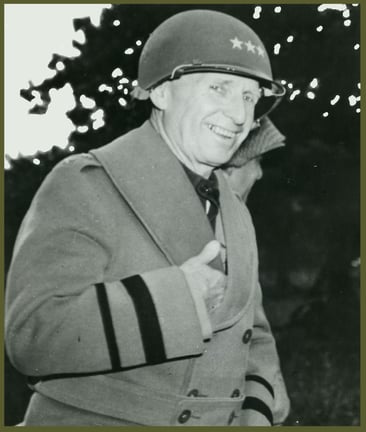 .
. 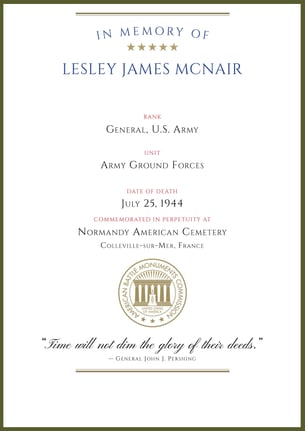
Leslie McNair was born May 25th, 1883 in Verndale, Minnesota. He graduated from the U.S. Military Academy at West Point, Class of 1904.
As a U.S. Army Lieutenant General during World War II, he was killed by friendly fire when a USAAF Eighth Air Force bomb landed in his foxhole near Saint-Lo during Operation Cobra as part of the Battle of Normandy. He rests today at the Normandy American Cemetery of Colleville-sur-Mer. Plot F, Row 28, Grave 42.
Army Distinguished Service Medal awarded for actions during World War I.
War Department, General Orders No. 59 (1919)
The President of the United States of America, authorized by Act of Congress, July 9, 1918, takes pleasure in presenting the Army Distinguished Service Medal to Brigadier General Lesley James McNair, United States Army, for exceptionally meritorious and distinguished services to the Government of the United States, in a duty of great responsibility during World War I. As the Senior Artillery Officer of the Training Section, General Staff, General McNair displayed marked ability in correctly estimating the changing conditions and requirements of military tactics. He was largely responsible for impressing upon the American Army sound principles for the use of artillery and for improving methods for the support of Infantry, so necessary to the proper cooperation of the two arms.
Ninth & Eighth Air Force Operation COBRA continues!
Eleven B-26 and A-20 groups from the Ninth US Air Force continue to bomb the rectangle adjacent to the Périers/Saint-Lo Road.
Forty-Two B-26s repeat the bombing errors of the previous day and short-bomb the area again hitting the 30th Infantry Division!
Ninth Air Force fighters strafe German troop positions also. While killing many Germans these attacks tended to shroud the bombing zone with smoke and dust, thus, hampering the bombing barrage launched by the Eighth Air Force.
Some of the Eighth Air Force bomb drops were short also. The result was another tragic friendly-fire incident.
111 American soldiers were killed and another 490 were wounded.
Despite the American losses the ground attack proceeded at exactly 11:00 hours and the First US Army made an 800-yards advance though the bombed-out zone.
483 of 500 Fighters (mix of P-47s, P-38s and P-51s) from the Eighth Air Force also participated in the attack with strafing and bombing runs.
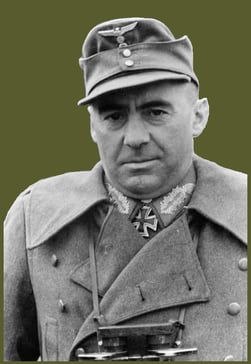
German Lieutenant General Fritz Bayerlein, commander of the Panzer Lehr Division commented in his memoirs: "the bombers came as if on a conveyor belt. Back and forth the carpets were laid, artillery positions were wiped out, tanks overturned and buried, infantry positions flattened, and all roads and track destroyed. By midday the entire area resembled a Mondlandschaft (moonscape), with bomb craters touching rim to rim. All signal communications had been cut and no command was possible. The shock effect on the troops was indescribable. Several of my men went mad and rushed round in the open until they were cut down by splinters. Simultaneously with the storm from the air, innumerable guns of American artillery pounded drumfire into our positions. Over 70 percent of my soldiers were either dead, wounded, crazed or dazed."
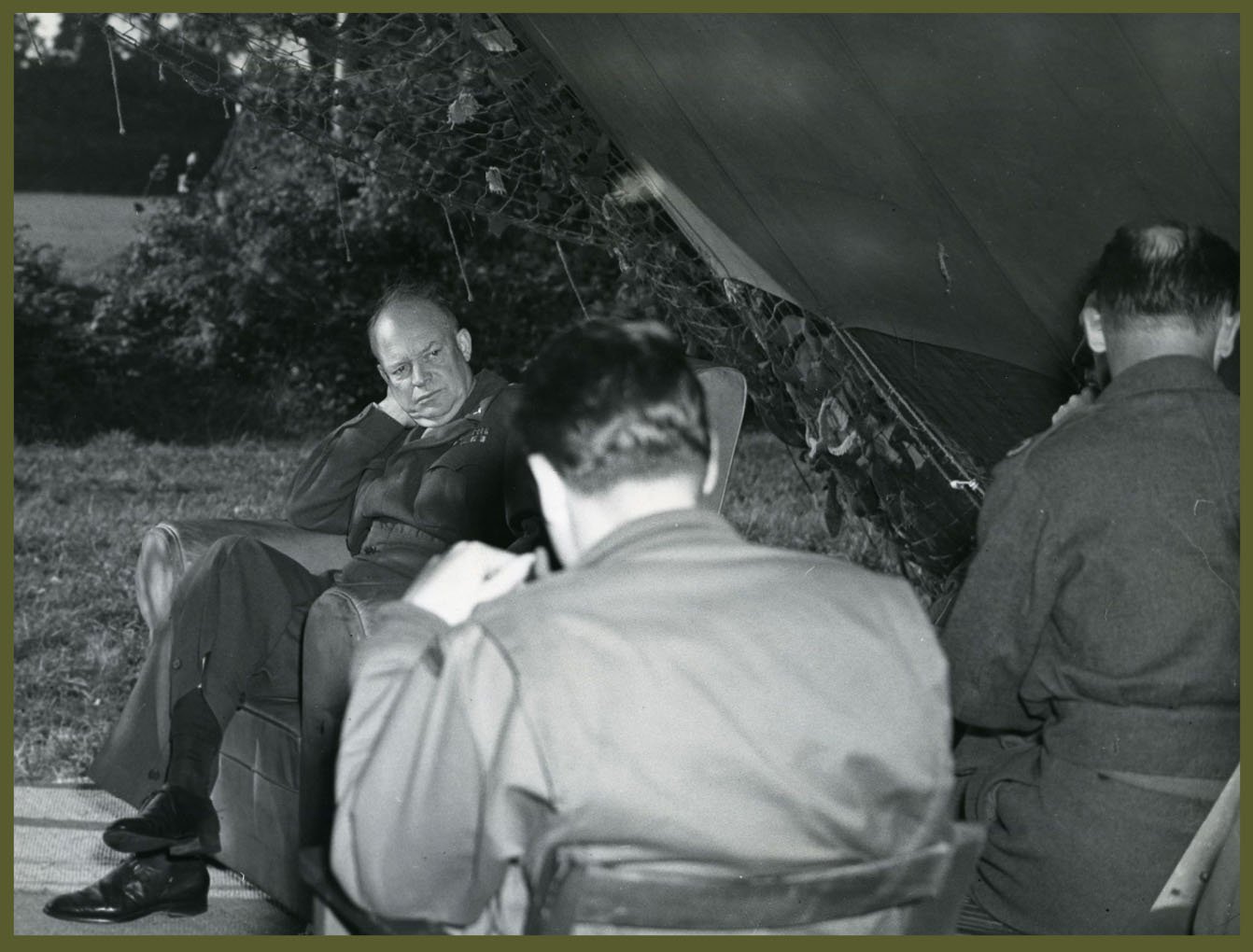
General Dwight D. Eisenhower holding a Press Conference at his Advance Command Post confirming the fact that General George S. Patton was commanding the US Third Army....
Because of the friendly-fire casualties during Operation Cobra, General Dwight Eisenhower ordered that no longer the use of heavy bombers should be used as tactical support for ground troops for the remainder of the war.
Operation Cobra - 9th Infantry Division objectives
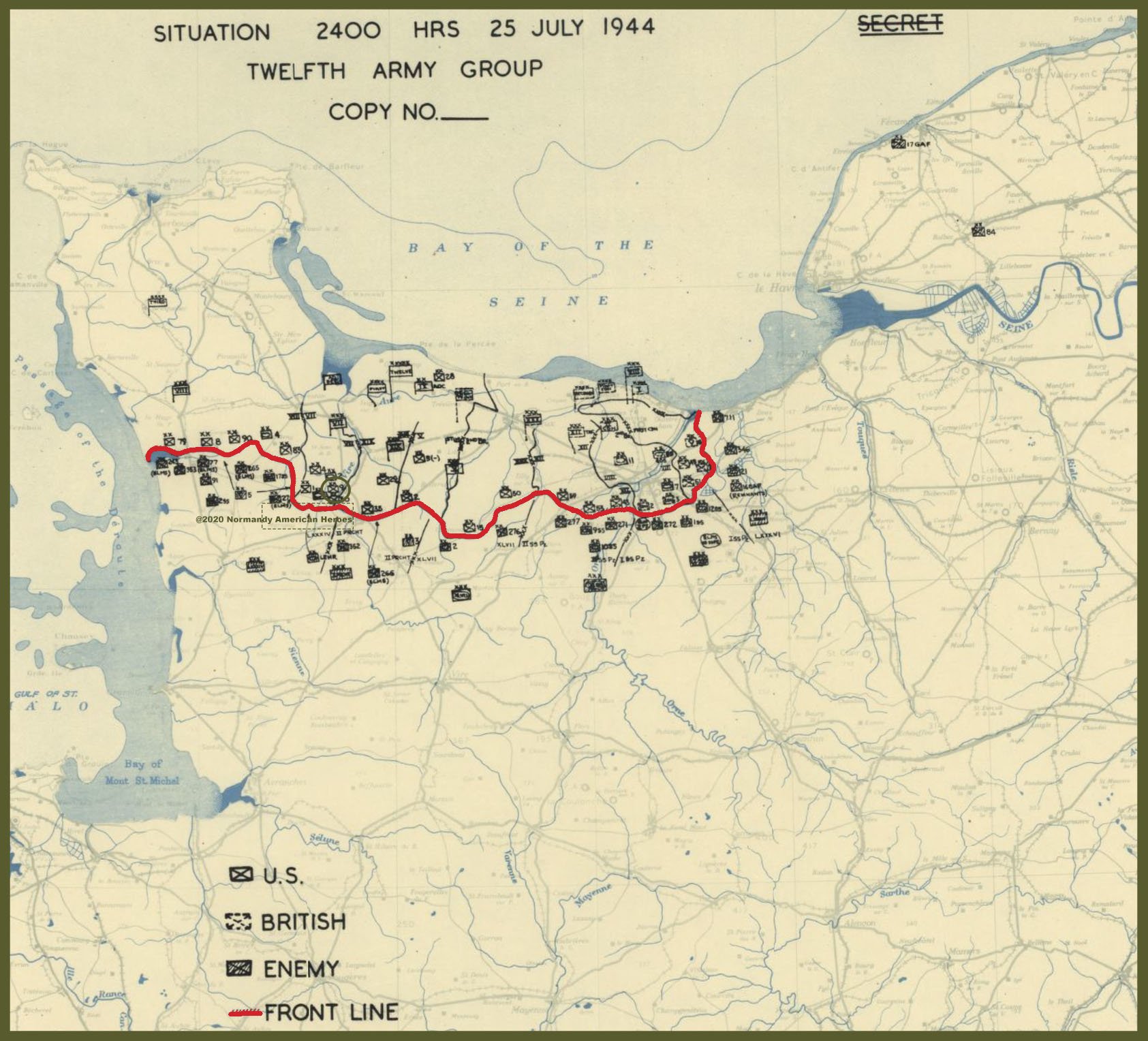
60th Infantry Regiment
During Operation Cobra the objective of the regiment was to clear the area southwest of the crossing of Les Champs-de-Losque and Marigny (D-29) and Périers – Saint Lô (D-900) roads. To be more precise, the regiment had three objectives:
Objective “A” covering Hill 55 coordinates 370667 and the high ground North to Périers – Saint Lô road committed to the 3rd Battalion.
Objective “B” covering the network of unimproved roads northwest of the road junction coordinates 353649 committed to the 1st Battalion
Objective “C” covering the high ground between Montreuil-sur-Lozon and La Butte (D-149) committed to the 2nd Battalion.
The 2nd Battalion was moving down the road Périers – Saint Lô when it received its first enemy fire in an orchard at coordinates 401677 but overcame it and reached Objective “C” at 15:00 hours.
The 1st Battalion went into action at 12:30 hours and by 13:45 hours had crossed the road Périers – Saint Lô just above the hamlet of Le Mesnil-Eury (D-900). It was following the 2nd battalion and both met heavy enemy fire from 88 mm guns which knocked out two tanks at the road junction coordinates 384672.
Major Stephen W. Sprindis decided to take command of "A" Company, led the men South of Montreuil-sur-Lozon then to the East at coordinates 384661. The other elements of the 1st Battalion reached their band of brothers in the middle of the night.
The Germans took advantage of the gap made by the 1st Battalion, between Company “A” and the rest of the force.
One German company was between the 2nd Battalion and the road Périers – Saint Lô and another one between the 1st Battalion and the same road.
At sunrise the American troops made a genius maneuver in pushing one German company on the other to surrender them. It seemed that the Germans were preparing a counterattack, the Americans were correct in their assumption.
At 13:00 hours on the 26th of July 1944, the German forces attacked the 1st Battalion’s positions but it was knocked out without trouble.
In the afternoon, the 3rd Battalion of the 47th Infantry Regiment was attached in support of the 2nd Battalion to launch a coordinated attack on the German positions North and northeast of Montreuil-sur-Lozon. Patrols were sent to reconnoiter but it appeared the Germans had left their positions, the attack was finally called off.
Unfortunately, Major Sprindis was wounded during the night of the 26th to the 27th of July, therefore Lieutenant Colonel John Baird Shinberger took command of the 1st Battalion at 05:00 hours.
In the morning of the 27th of July 1944, the 1st Battalion continued its attack and occupied objective “B”, the 2nd Battalion was ordered to move West on Hill 55.
"E" Company defended the roadblock on Hill 55
"G" Company occupied the crossroad at coordinates 365667
"F" Company was in reserve on Hill 62, at coordinates 375660, but was sent at 20:00 hours to establish a roadblock at coordinates 364647
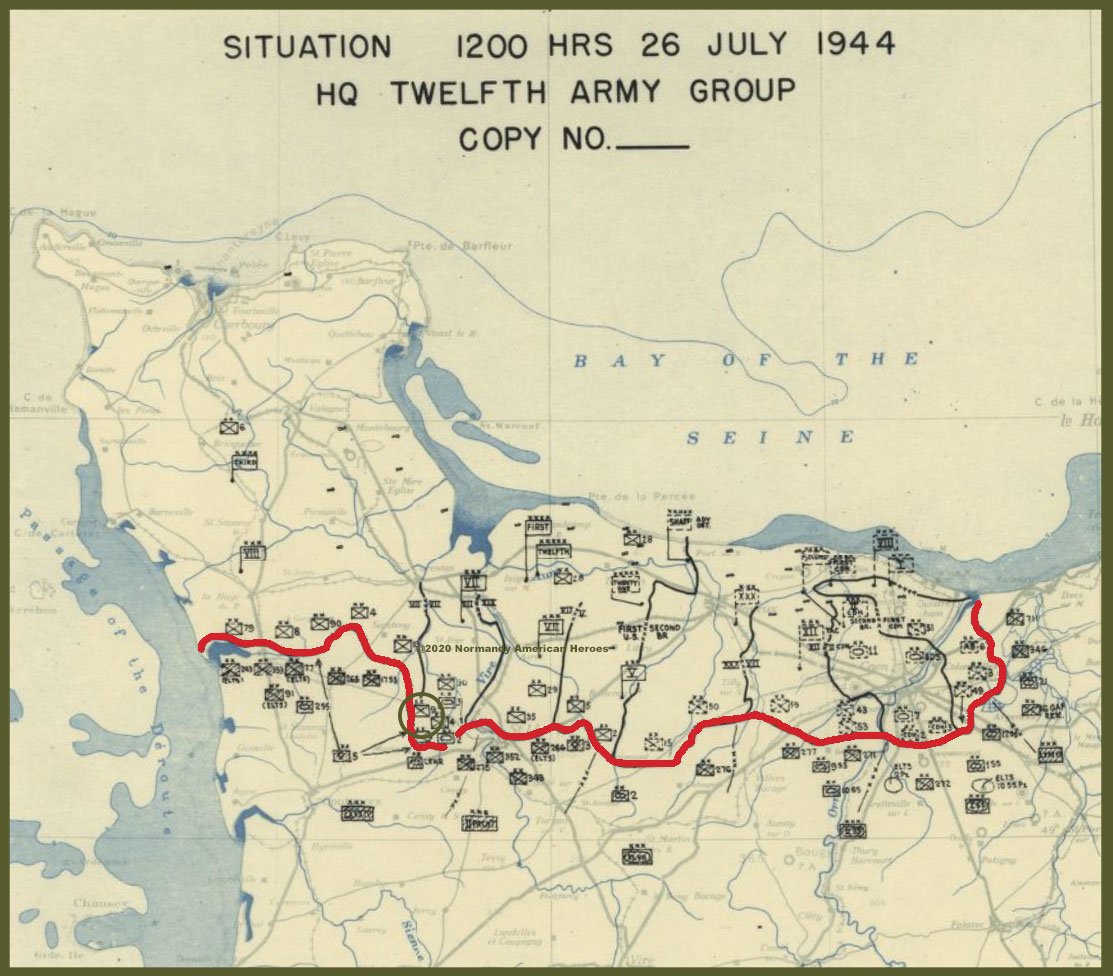
47th Infantry Regiment
The 47th Infantry Regiment of the 9th Infantry Division was pulled back to a line more or less 200 yards North of the road Périers – Saint Lô, precisely at the West of the hamlet of La Petite Ducrerie (D-42) not far away from La Petite Hairie (D-29) and La Caillourie (D-92) hamlets. The 1st Battalion West, 2nd Battalion in the center and the 3rd East.
The beginning of the shelling by the medium bombers went without trouble but when the heavy bombers took over, the wind started to blow from the South, making the white smoke indicating the bombing zone disappear!
The heavy bombers missed their targets, dropped some of their bombs on the 47th Infantry Regiment’s positions.
One bomb was laid in the middle of the aid station, causing some casualties in the 1st Battalion’s ranks. The 2nd Battalion succeeded in escaping the blast with slight losses but the 3rd was hit hardest of them all. Around 30 soldiers suffered casualties, damage were not only human but also to equipment as all means of communication were destroyed.
At 11:00 hours, the 1st Battalion moved in column of companies across country to the little hamlet of La Dainnerie (D-29) then turned West to hit the road Périers – Saint Lô, continued its advance through hedgerows supported by a tank dozer, to the farm of La Boisnardière.
At the farm La Boisnardière, the battalion cut the crossroads between Marigny – Périers – Saint Lô roads. The first enemy fire was encountered one kilometer North of Périers – Saint Lô road but no serious resistance appeared while crossing the main road at 17:00 hours.
Just before 23:00 hours it occupied the high ground South of Périers – Saint Lô road and took position in the vicinity of Montreuil-sur-Lozon.
Note: Elements of the 60th Infantry Regiment had preceded the 1st Battalion of the 47th Infantry Regiment in its advance.
In the meantime, the 2nd Battalion went into battle from the area in which it had assembled during the bombing, by passing elements of the 3rd Battalion to reach the village of La Cauverie.
The German soldiers were well entrenched just South of it, they used the cover provided by the woods to dug in foxholes and machine gun nests.
Major J. A. Boland, S-3; Major R. H. Bryant, Executive officer, 1st Battalion and Major W. W. Tanner, Executive officer, 3rd Battalion will later described the position South of La Cauverie as the most highly organized that the regiment had ever encountered.
After two hours and a half, the three battalions didn’t reach their original objective which was the road Périers – Saint Lô road!
The 2nd Battalion succeeded in passing La Cauverie but encountered other small arms fire, the Germans were positioned all around them and were pinning them down during all afternoon.
The company which was facing the Germans in the orchard was relieved by an element from the 4th Infantry Division between 18:00 and 19:00 hours. The 2nd Battalion left the area in which it was held up, letting behind him one company, to push South toward the Périers – Saint Lô road but once again was held up by the Germans. As it was dark, men dug in for the night and a line of defense was set up.
The last battalion which was the 3rd went into action one hour and thirty minutes after the 1st and the 2nd.
In view of the casualties it had suffered during the bombing, it had to reorganize itself and couldn’t start as planned. All companies started to push forward the Périers – Saint Lô road with “L” Company in the lead. Tank platoon, tank destroyer platoon were right behind the infantrymen as support.
During its advance, as for the 1st Battalion, no enemy resistance was encountered, and by 14:00 hours men were on the road of Marigny.
At this point the 3rd Battalion entered into the 60th Infantry Regiment’s sector. It was then decided to pass by the mud ways across the road Périers – Saint Lô South of Montreuil-sur-Lozon.
At 20:00 hours, a considerable enemy fire came from the West, in view of the enemy resistance no further advance was made.
During the night, a German unit cut from the northwest and captured 18 medics and 2 officers. Their position was discovered at daylight, one company was sent in the North to find the hostages.
On the second day of Operation Cobra, the 3rd Battalion now attached to the 39th Infantry Regiment moved West to the village of Lozon (D-94) reaching it by 14:00 hours, reducing the enemy forces who had caused damages in the ranks of the 60th Infantry Regiment.
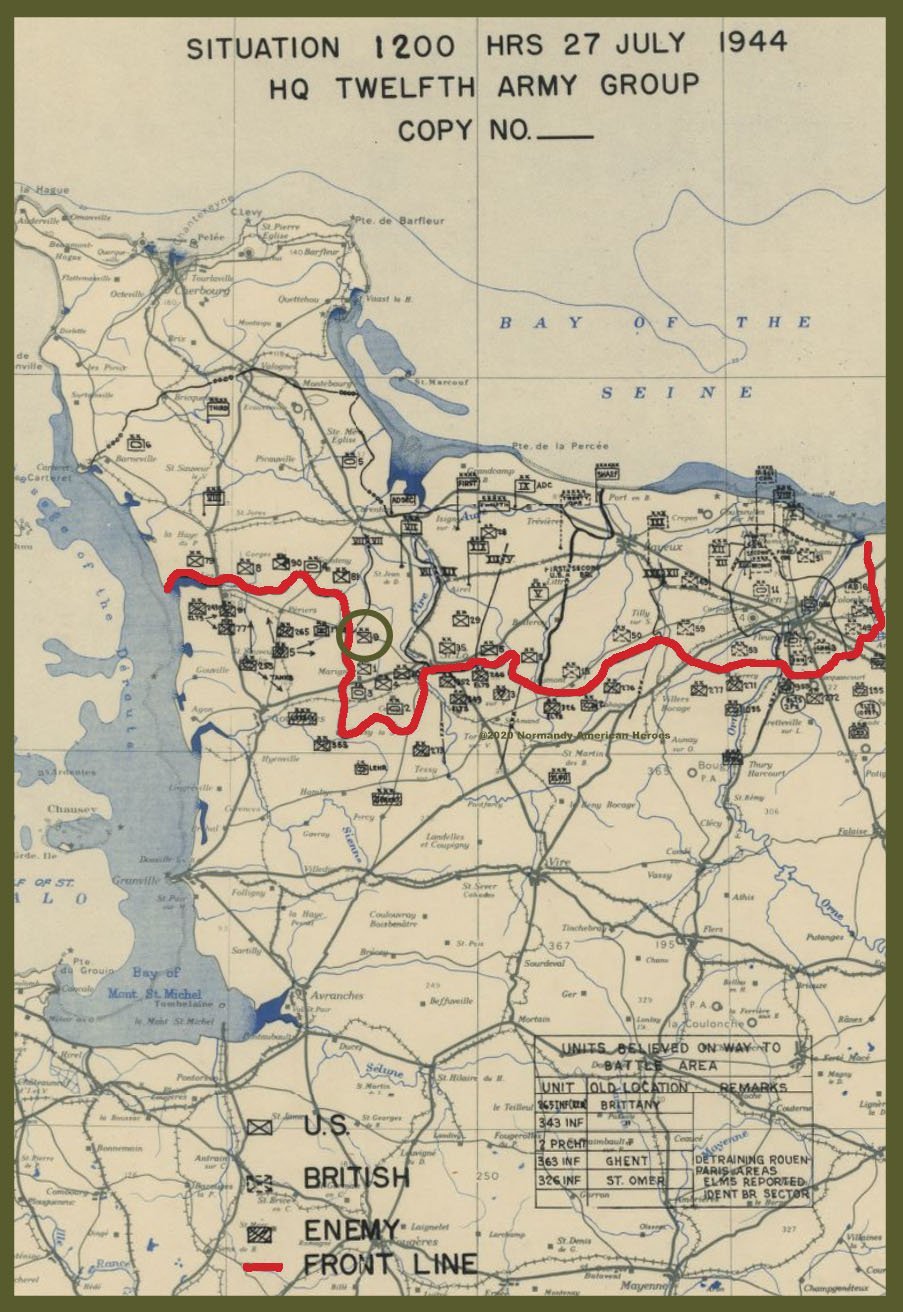
39th Infantry Regiment
Elements of the 39th Infantry Regiment were withdrawn at the North of the road Périers – Saint Lô before the shelling from the 8th and 9th Air Force on the 24th of July but the attack was postponed also for them due to the bad weather.
The 8th Infantry Regiment from the 4th Infantry Division moved from their left at 13:00 hours to occupy the former positions held by the 3rd Battalion who moved East toward La Cour des Landes (D-189) to assist the 2nd Battalion. The 2nd Battalion was facing gun emplacements in the woods, able to threatened the crossroad coordinates 422673.
After many attempts made by the 2nd Battalion's men, the 3rd attacked the gun positions supported by “F” Company.
All guns were silenced at 20:30 hours. Colonel H. Flint, commander of the 39th Infantry Regiment was killed during the attack, receiving a bullet in the head. It was then Colonel Van H. Bond, Executive officer who assumed command.
On the 25th of July 1944, elements of the regiment withdrew to assembly areas 1200 yards off the Périers – Saint Lô road.
The 1st Battalion attached to the 47th Infantry Regiment suffered 2 casualties due to the bombs dropped unfortunately on them. As for the 3rd battalion which was in Division Reserve at La Petite Ducrie, they suffered 4 killed and 10 injured.
Note: The 2nd and 3rd Battalions stayed in their position until 1900 hours then moved to be in the rear of the 47th Infantry Regiment.
On its way to battle, the 1st Battalion had the order to attack and to seize an orchard at coordinates 415673 with the 3rd Battalion of the 47th Infantry Regiment, but had to do it alone due to the losses encountered by the 3rd Battalion.
"B" Company were riding tanks from the 746th Tank Battalion to reach La Chapelle-en-Juger (D-89 / D-149) by nightfall but a withdrawal was made 1000 yards before the town for a better consolidation of the lines. The 1st Battalion made not further advance in the day.
In the early hours of the 26th of July 1944 (07:53 hours) the 3rd Battalion of the 39th Infantry Regiment was committed to move South, to pass by the 1st and 2nd Battalion’s positions of the 60th Infantry Regiment which had strengthened their line of defense at Montreuil-sur-Lozon and Le Glinel (D-149) to secure the road at coordinates 377651 - 377643 - 377637-38463.
For the next two days the regiment advanced South of the road Périers - Saint Lô meeting sniper fire, automatic small arms. This didn't prevent them in destroying all enemy gun emplacements!
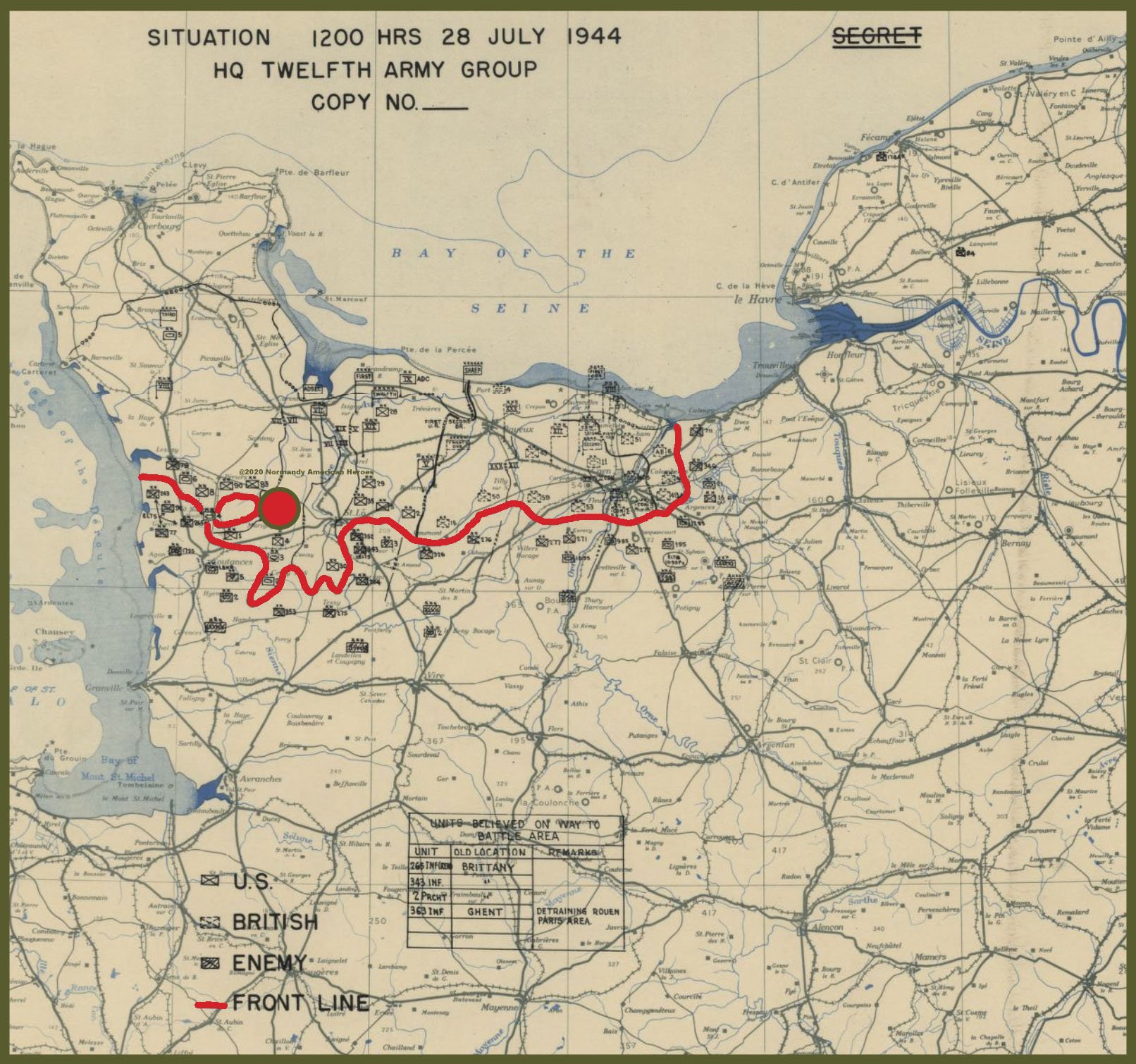
By nightfall on the 28th of July 1944, the 39th Infantry Regiment suffered:
5 Officers and 132 Enlisted men KIA
1 Officer and 6 Enlisted men DOW
26 Officers and 571 Enlisted men WIA
2 Officers and 23 Enlisted men MIA
Written by Pierre Fallet, WWII Trainee of Normandy American Heroes
DON'T FORGET TO SHARE THIS POST

















